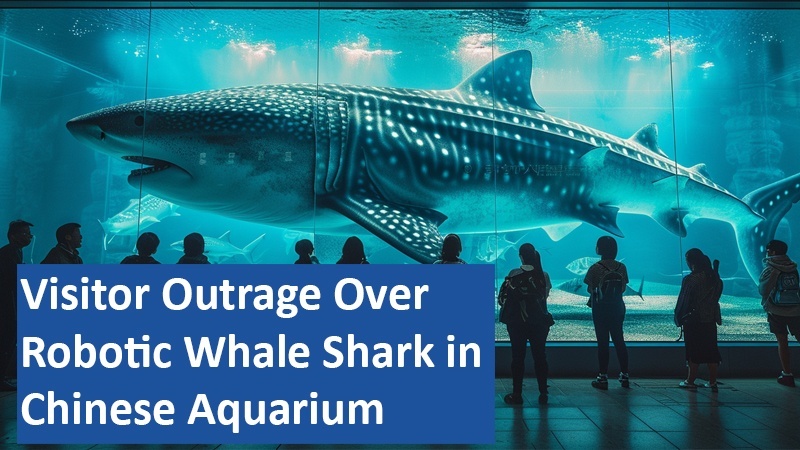A newly opened aquarium in Shenzhen, China, faces backlash after visitors discovered its featured whale shark is actually a robotic replica. The Xiaomeisha Ocean World, which promoted the exhibit as a major attraction, now finds itself in the midst of an online storm as disappointed visitors express frustration. Many feel misled, saying they expected a live animal instead of an animatronic.
By Lia White
Discontent Grows Over “Fake” Whale Shark

Visitors to Xiaomeisha Ocean World had high expectations for the exhibit, promoted as a highlight of the new aquarium. However, the whale shark they encountered was a robot rather than a living creature, leading to a wave of negative reviews on platforms like Dazhong Dianping, where the aquarium’s page was flooded with critical comments. Descriptions of the experience ranged from “speechless at the fake shark” to “deceptive” for using a robotic animal. Many questioned whether the attraction aimed to “trick children” into believing the animatronic was real.
A High Price for an Unexpected Experience
Tickets for the aquarium, which opened on October 1, cost around 240 yuan (about $33) for adults, a price that some visitors felt was too high given the use of robotic sea life. Many social media users expressed frustration, stating they had paid expecting to see real marine animals, not replicas. In response, local media quoted aquarium representatives who pointed to laws prohibiting the capture of whale sharks as a reason for the robotic stand-in. According to the aquarium, using a robotic model raises awareness about protecting this endangered species, a sentiment that has garnered mixed reactions online.
Previous Cases of Animal Misrepresentation
This recent incident at Xiaomeisha Ocean World is not the first time Chinese animal attractions have faced criticism for misrepresentation. In May, the Taizhou Zoo in Jiangsu province was widely criticized for painting chow-chow dogs to resemble pandas. More recently, the Shanwei Zoo in Guangdong province admitted to a similar tactic, using painted dogs as stand-ins for other animals. Both cases sparked heated debates about the ethics and transparency of attractions featuring “fake” animals.
A Debate on Realism Versus Awareness
Xiaomeisha Ocean World maintains that the robotic whale shark was a thoughtful decision meant to inspire conservation efforts without subjecting a live animal to captivity. The aquarium’s explanation has sparked debate, with some supporting the approach for its educational purpose and others feeling the exhibit should have been clearer about its artificial nature. This controversy highlights the balance attractions must strike between awareness-raising and transparency, especially with the rising demand for ethical treatment of animals in entertainment.
This situation raises questions about the role of realism in educational exhibits and the expectations visitors have when paying to experience live animals.
Based on information from watson.ch and own research.